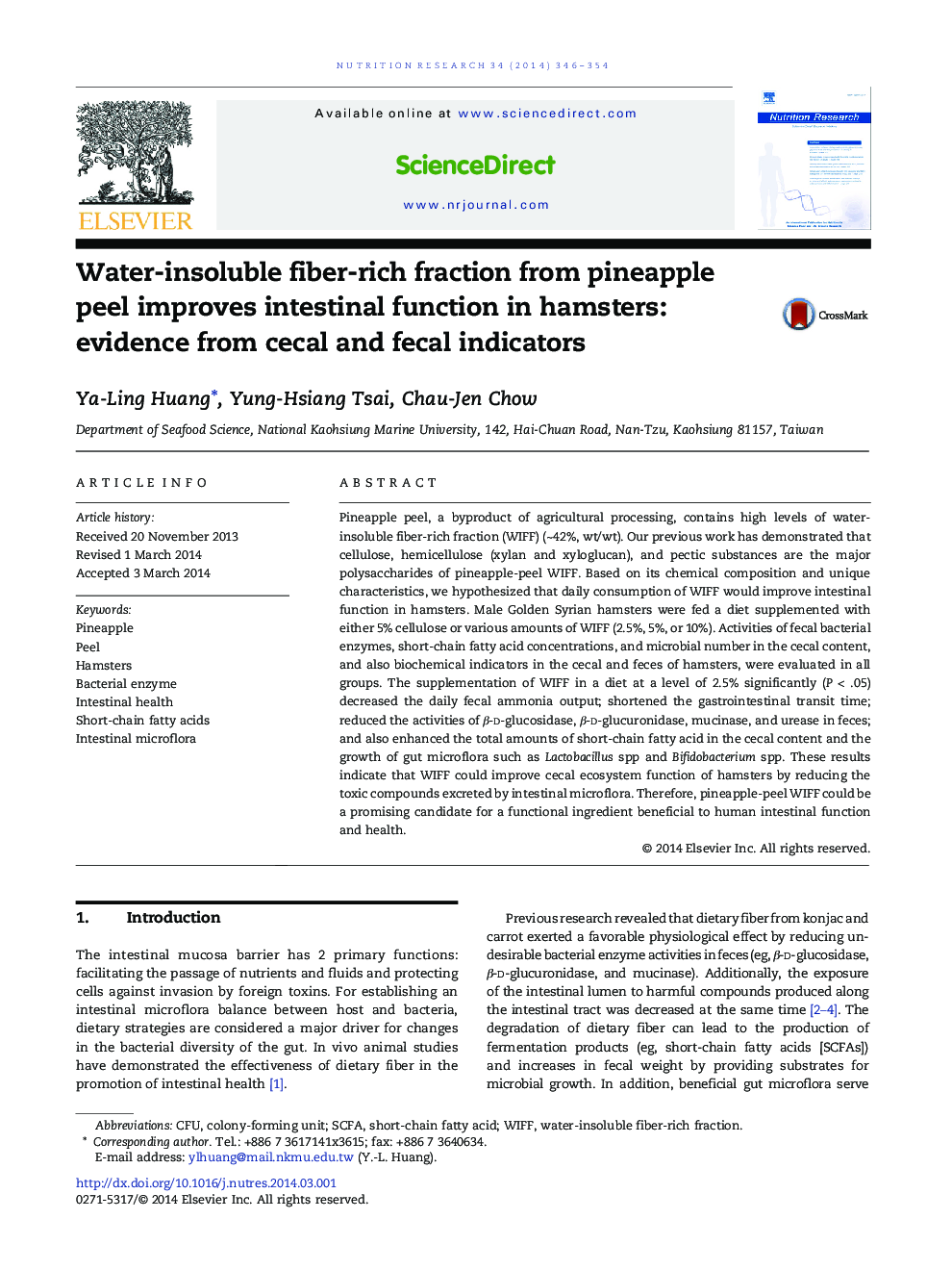| Article ID | Journal | Published Year | Pages | File Type |
|---|---|---|---|---|
| 5904387 | Nutrition Research | 2014 | 9 Pages |
Pineapple peel, a byproduct of agricultural processing, contains high levels of water-insoluble fiber-rich fraction (WIFF) (~42%, wt/wt). Our previous work has demonstrated that cellulose, hemicellulose (xylan and xyloglucan), and pectic substances are the major polysaccharides of pineapple-peel WIFF. Based on its chemical composition and unique characteristics, we hypothesized that daily consumption of WIFF would improve intestinal function in hamsters. Male Golden Syrian hamsters were fed a diet supplemented with either 5% cellulose or various amounts of WIFF (2.5%, 5%, or 10%). Activities of fecal bacterial enzymes, short-chain fatty acid concentrations, and microbial number in the cecal content, and also biochemical indicators in the cecal and feces of hamsters, were evaluated in all groups. The supplementation of WIFF in a diet at a level of 2.5% significantly (P < .05) decreased the daily fecal ammonia output; shortened the gastrointestinal transit time; reduced the activities of β-d-glucosidase, β-d-glucuronidase, mucinase, and urease in feces; and also enhanced the total amounts of short-chain fatty acid in the cecal content and the growth of gut microflora such as Lactobacillus spp and Bifidobacterium spp. These results indicate that WIFF could improve cecal ecosystem function of hamsters by reducing the toxic compounds excreted by intestinal microflora. Therefore, pineapple-peel WIFF could be a promising candidate for a functional ingredient beneficial to human intestinal function and health.
